The discovery of awesome caves at Nerja transformed a small fishing town into a thriving tourist resort in Malaga province, Andalucia, southern Spainn
By Nick Nutter | Updated 29 Aug 2022 | Málaga | Villages |
Login to add to YOUR Favourites or Read Later
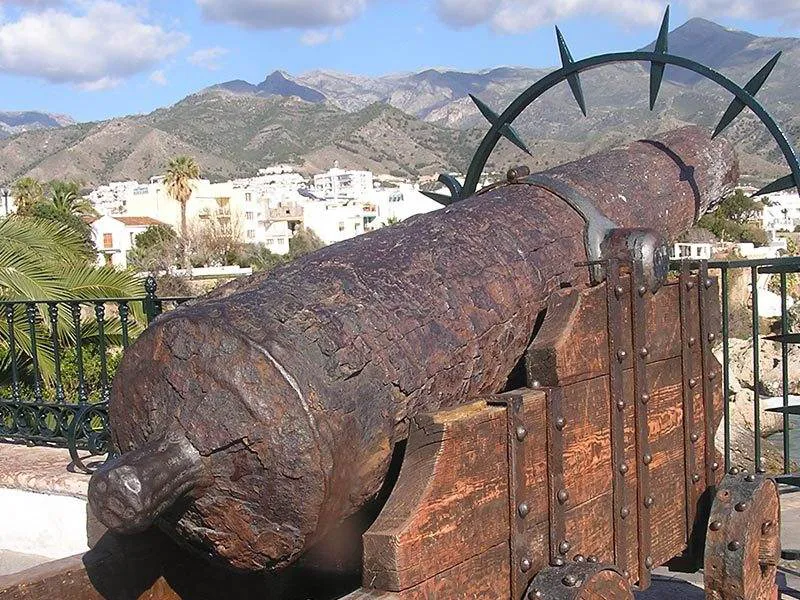
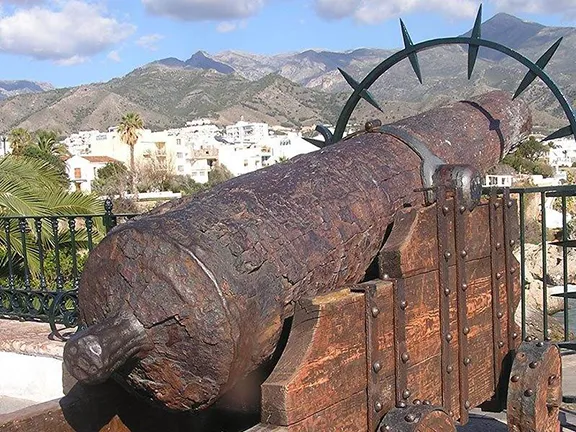
Cannon, Balcon Europa, Nerja
Just 50 kilometres east of Málaga is the coastal town of Nerja. The Romans called the settlement Detunda and the Moors who succeeded them called it Narixa, the origin of the name today. Narixa soon became known throughout the Muslim world for its agricultural products, including sugar cane and silk that made their way as far as the markets in Damascus.
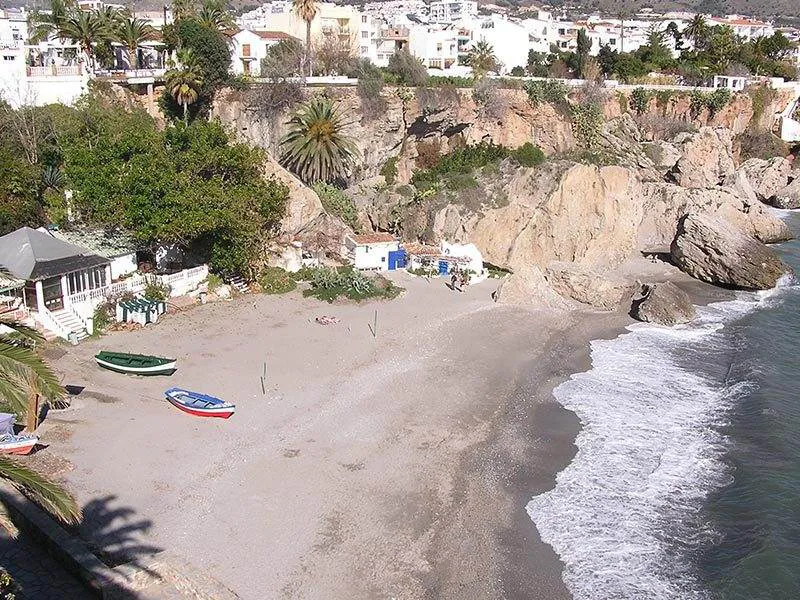
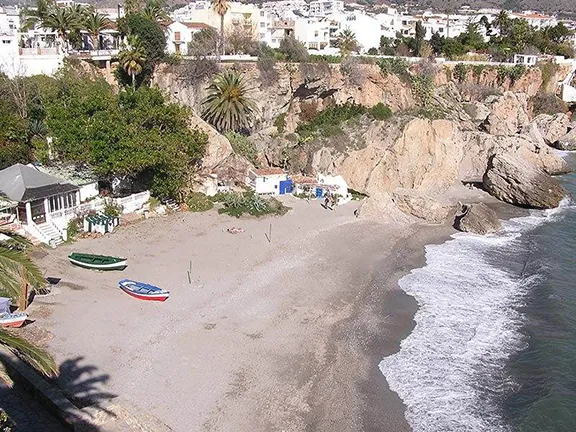
Calahonda Beach. Nerja
A fortified position, La Bateria, was built in Christian times to warn of pirates and coastal raiders replacing a Moorish fort that dated from the 9th century. This was destroyed in 1810 by British forces to deny its use to the French during the peninsula war. The rusting cannon still guarding the position may well date from this time.
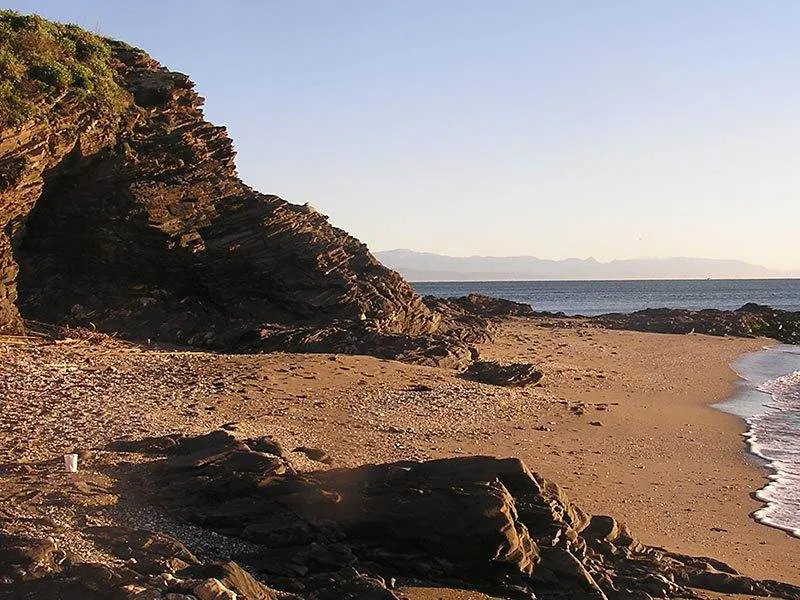
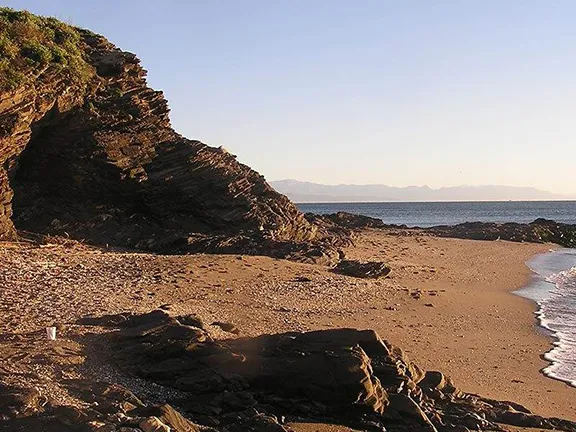
Beach at Nerja
The Balcon de Europa now occupies the same strategic point. Its name is reputed to have been given to it by King Alfonso XII who visited the town following an earthquake in 1885 and who greatly admired the panoramic view from that position. His statue graces the Balcon and is a focal point for tourist shots.
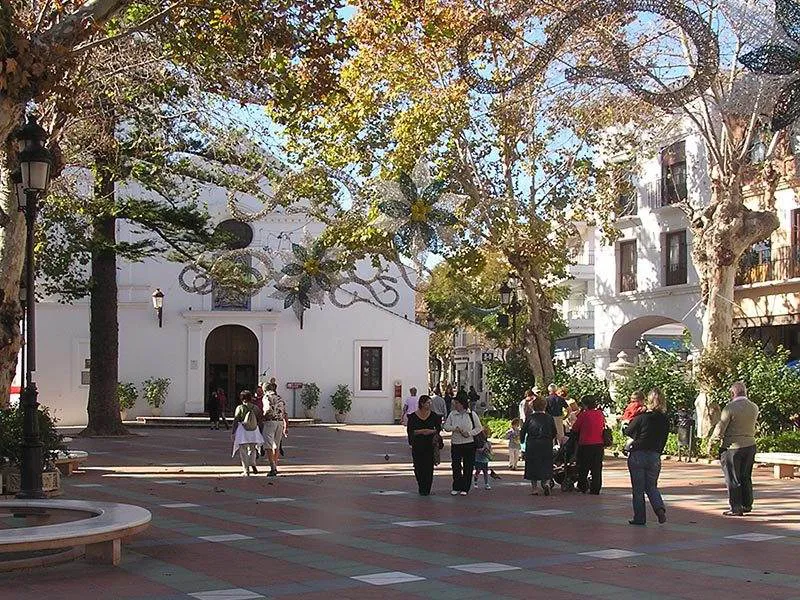
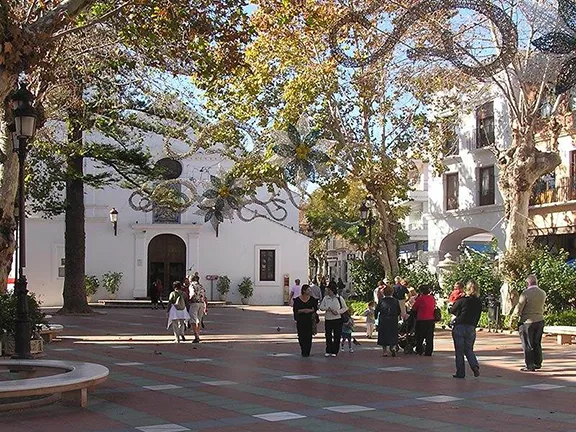
Nerja Square
In more recent years sugar cane has made way for semi-tropical fruits, mango, papaya and avocado. Nerja is at the western end of the area known as the Tropical Coast, a stretch of coast that is particularly well protected by the mountains in the hinterland with a temperature average a little higher than the rest of the Costa del Sol. For that reason, Nerja is a popular destination throughout the year.
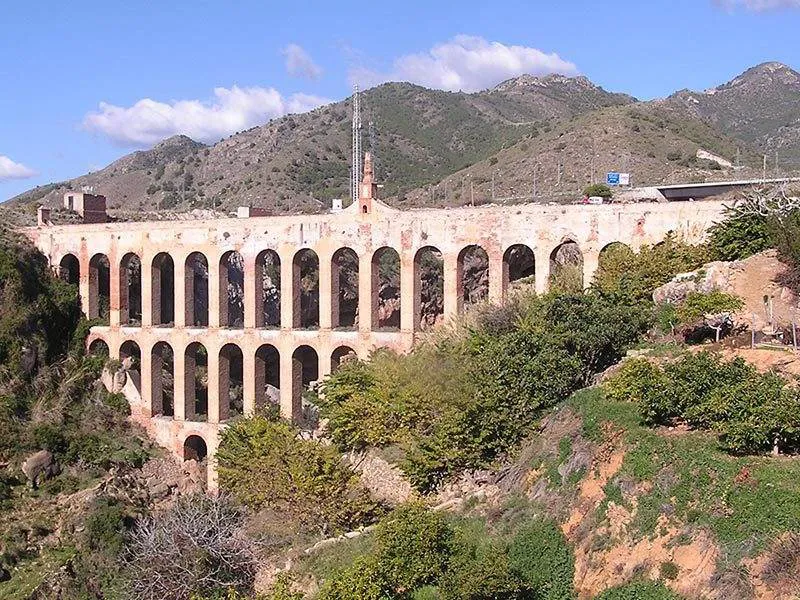
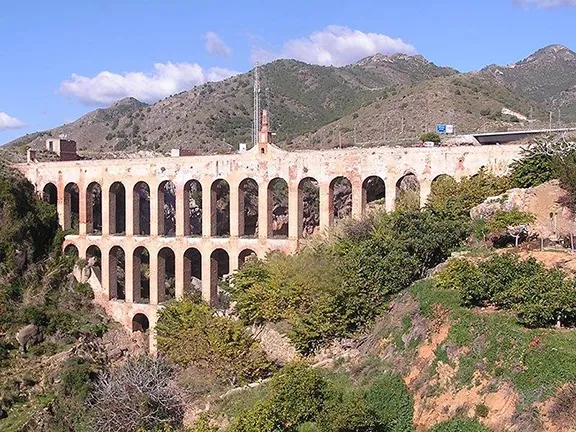
Aquaduct Nerja
To help you appreciate the balmy weather Nerja has 16 kilometres of beaches ranging from small coves nestling at the foot of the cliffs in the town itself to the internationally famous Burriana Beach at the eastern end of town.
The town itself remains surprisingly unspoilt. It is an old resort that seems to have been developed before the craze for high-rise and high-density housing made itself felt so you are still able to wander the narrow streets between the Moorish style whitewashed houses, many of which are decorated with window boxes and planters. Within the maze, you will find small shops selling the local craftworks as well as the local produce, a sweet wine, olive oil, honey and tropical fruits.
At the landward end of the Balcon de Europa, the tree-shaded town square is the traditional centre of activity. The 17th century El Salvador church at one side of the square is built in a curious baroque-mudejar style and is well worth a visit.
Around the square, you will also find plenty of places to eat from tapas bars to international restaurants, each seemingly competing with the others for variety and quality.
On the outskirts of town, you will find the third most popular tourist attraction in Spain, Nerja caves and, on the way, an aqueduct that the local taxi drivers will insist is Roman. In fact, it is much more recent but no less spectacular and it still brings water from the hills to the town that the Moors called ‘abundant spring’.
From the same spot, you can see history in the making. In the far background is the new A7 road. The road you are stood on is the ‘old’ N340 and towards the sea, down the same valley is the ‘very old’ N340 with a quaint bridge.